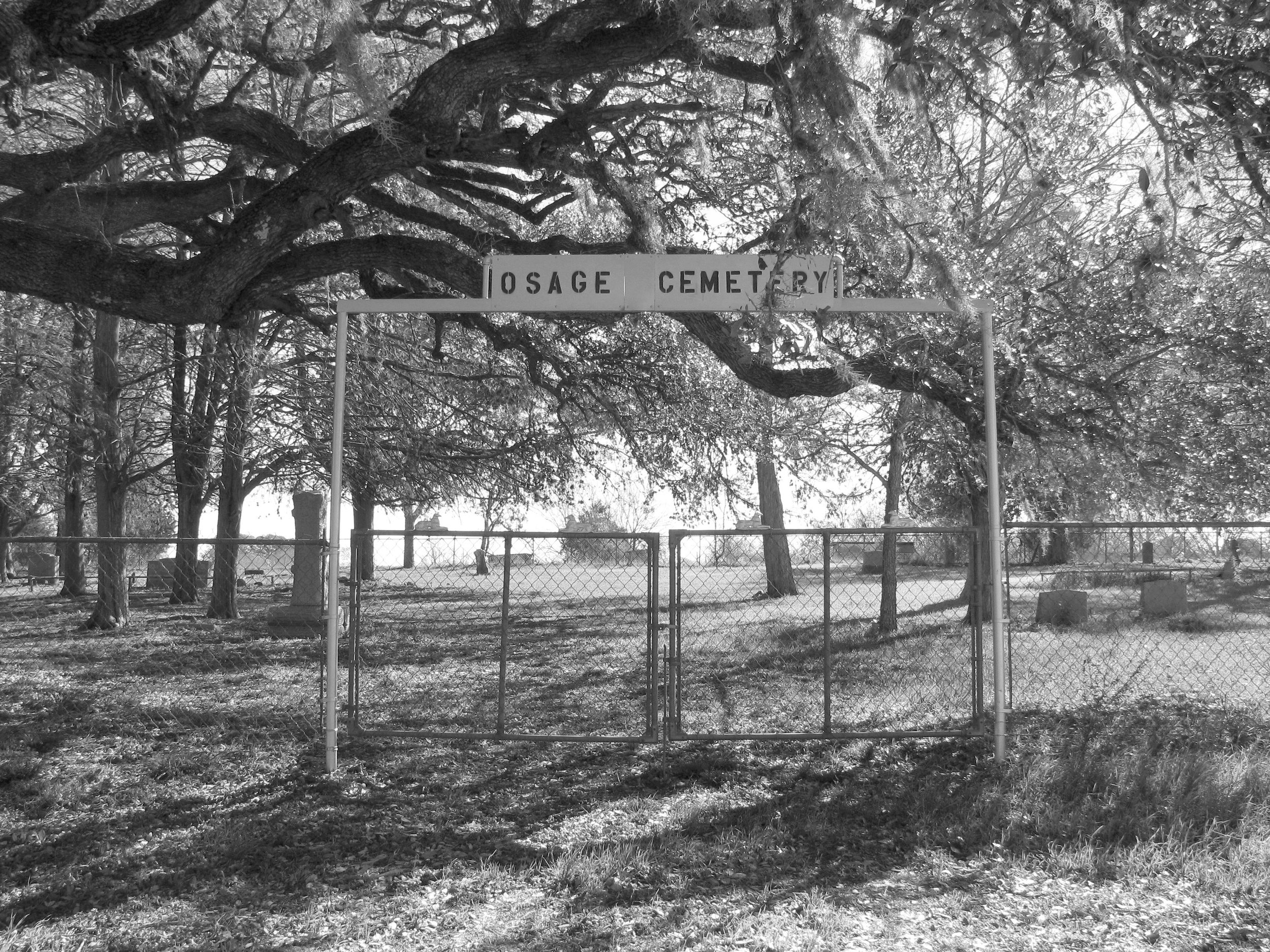
Osage is the last memorial to the ghost town of Osage and a Historical Texas Cemetery.
History of Osage
The Osage community is unique in that its inhabitants were mostly Southerners with British roots. Much of the rest of Colorado and Fayette Counties were settled by Czechs and Germans.
1831 - 1856
Henry Austin (cousin to Stephen F. Austin, considered the founder of Anglo Texas) is deeded eleven leagues from the Mexican government on May 31, 1831. After his death in 1852, the land is divided into tracts and in 1856, his executor and nephew Edward Austin deeds ten acres to the trustees of an existing school at Harvey’s Creek on the provision they build a new school and church building.
1860
Gideon Blackburn McLeary dies and is buried in the cemetery. His tombstone is the oldest dated one in the cemetery
1862-1864
The Confederate government establishes a post office at Harvey’s Creek. Dr. Samuel McCleary (Gideon’s brother) is credited with naming the settlement Osage, based on the number of Osage Orange trees in the area (Maclura pomifera). In 1864, the Harvey Creek School is renamed the Osage Academy; the school will be used into the 20th century for education and religious gatherings.
1873
The Galveston, Harrisburg, and San Antonio Railroad begins laying tracks four and a half miles southwest of Osage; Weimar is founded and developed. Osage starts to lose businesses and families.
An additional acre is purchased in 1875 from Leonora Adkins and her husband Rowan Green and the Cemetery reaches its current form.
1948
The Osage school is incorporated into the Weimar School District and the town of Osage has virtually disappeared - except for the cemetery.
2006-2016
In 2006, the Osage Community Cemetery Association is founded. In 2016, the Association receives a Historical Texas Cemetery Certificate and a Capital Campaign raises the money for a Texas Historical Marker, dedicated in 2018.
.
The names on the tombstones are a record of those early Southerners who brought their culture, their hopes and their dreams to start afresh on the Blackland Prairie near spring fed Harvey’s Creek.
— Rox Ann Albrecht Johnson and Mary Anne Brune Pickens, A Good Place To Rest, pg. 7
Resources
Books and Booklets
Albrecht Johnson, Rox Ann, and Mary Anne Brune Pickens. A Good Place To Rest: A History of the Osage Community Cemetery and Early Harvey’s Creek Settlers. Newman Printing Company, 2018.
Boswell, Angela. Her Act and Deed: Women’s Lives in a Rural Southern County, 1837-1873. College Station, TX: Texas A&M University Press, 2001.
Cravens, Patsy. Leavin’ a Testimony. Austin, TX: University of Texas Press, 2006.
Gunn, Catherine and Jack Montgomery. Methodism in Weimar, 1874-1974.
Hinton, Mary. Weimar, Texas: First 100 Years, 1873-1973. Austin, TX: Von Boeckmann-Jones Company, 1973.
Jordan, Terry G. Texas Graveyards, A Cultural Legacy. Austin, TX: University of Texas Press, 1982
Kelsey, Mary Wilson. Robert Wilson, 1750-1826 of Blounty County, Tennessee. Houston, TX: 1987.
Kemp, Louis Wiltz. The Signers of the Texas Declaration of Independence. Salado, TX: The Anson Jones Press, 1959.
Shannon, Louise Goode. The House of Goode: Some escendants of Edward Goode Circa 1647-1722. Ozark, MO: Dogwood Printing, undated.
Smith, C. Aubrey. Letter to My Grandchildren. 1967.
Stein, Bill (editor). Nesbitt Memorial Library Journal. Columbus, TX. (various issues)
Web Sites
